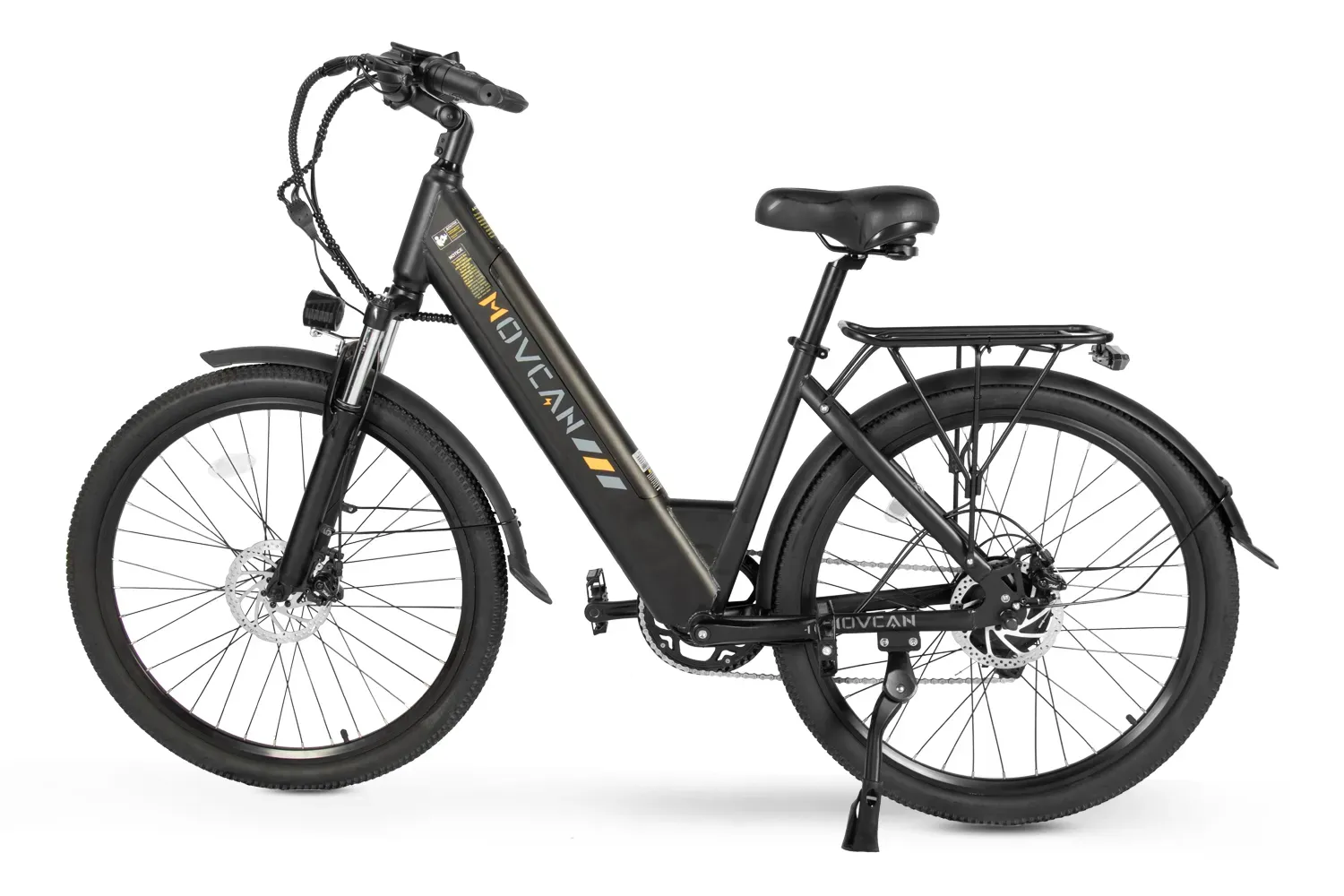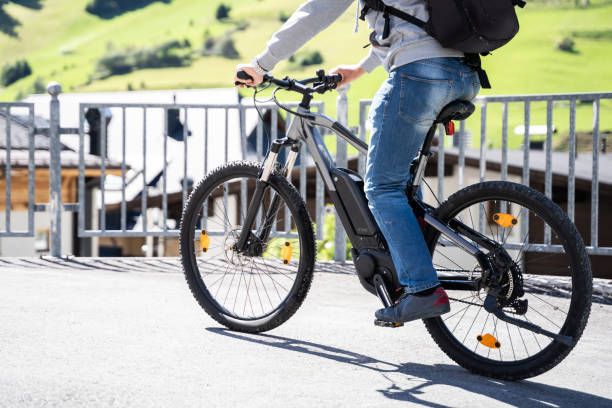
How e-Bikes Fit into the Urban Mobility Landscape?
As urban centers continue to grow and evolve, the need for sustainable and efficient transportation solutions becomes increasingly critical. Among the various options, e-bikes have emerged as a game-changer in the urban mobility landscape. This article explores how e-bikes fit into the urban mobility landscape, highlighting their benefits, the challenges they address, and their potential to revolutionize city commuting.
The Rise of e-Bikes: A Sustainable Urban Mobility Solution
What Makes e-Bikes Unique?
E-bikes, or electric bicycles, are bicycles equipped with an integrated electric motor that assists with propulsion. Unlike traditional bicycles, e-bikes offer the advantage of electric assistance, making it easier for riders to cover longer distances and tackle hilly terrains without excessive effort. This feature is particularly beneficial in urban settings, where e-bikes can seamlessly integrate with existing transportation infrastructure.
The Environmental Impact of e-Bikes
One of the most compelling reasons for the rise of e-bikes in urban areas is their positive environmental impact. E-bikes produce zero emissions during operation, significantly reducing the carbon footprint associated with daily commutes. By replacing short car trips with e-bike rides, urban dwellers can contribute to cleaner air and reduced traffic congestion, promoting a healthier and more sustainable city environment.
E-Bikes and Urban Mobility Challenges
Addressing Traffic Congestion
Traffic congestion is a persistent issue in many cities worldwide. E-bikes offer a practical solution by providing an alternative mode of transport that can navigate through traffic more efficiently than cars. E-bikes can use bike lanes and paths, often allowing riders to reach their destinations faster during peak traffic hours. This not only alleviates congestion but also reduces the stress associated with driving in heavy traffic.
Enhancing Accessibility and Connectivity
E-bikes also enhance urban mobility by improving accessibility and connectivity. They provide a viable option for people who may not be able to ride traditional bicycles due to physical limitations or long distances. With the assistance of electric motors, e-bikes make it possible for a broader demographic to engage in cycling, thereby promoting inclusivity in urban transportation.
The Health Benefits of e-Bikes
Promoting Physical Activity
While e-bikes provide electric assistance, they still require pedaling, which promotes physical activity. Riding an e-bike can be an excellent form of exercise, offering cardiovascular benefits and helping riders maintain an active lifestyle. For individuals who may find traditional biking too strenuous, e-bikes offer a more manageable way to incorporate physical activity into their daily routines.
Mental Health and Well-Being
In addition to physical health benefits, e-bikes can positively impact mental health and well-being. The act of cycling can reduce stress, improve mood, and increase overall happiness. The convenience and enjoyment of riding an e-bike can encourage more people to choose cycling as a regular mode of transportation, contributing to better mental health outcomes.
E-Bikes: A Cost-Effective Commuting Option
Lower Transportation Costs
Compared to cars and public transportation, e-bikes offer a more cost-effective commuting option. The initial investment in an e-bike is generally lower than purchasing a car, and the ongoing costs, including maintenance and energy consumption, are significantly reduced. This makes e-bikes an attractive option for urban commuters looking to save money on transportation.
Avoiding Parking Fees and Hassles
Parking can be a major hassle and expense in urban areas. E-bikes eliminate the need for parking spaces, as they can be easily parked in bike racks or other designated areas. This not only saves money on parking fees but also reduces the time spent searching for parking spots, making commutes more efficient and less stressful.
E-Bikes and Urban Infrastructure
Integrating E-Bikes into Public Transit Systems
To fully realize the potential of e-bikes in the urban mobility landscape, cities must invest in infrastructure that supports their use. Integrating e-bikes into public transit systems can create a seamless transportation network, allowing riders to combine cycling with other forms of transit for longer journeys. Bike-sharing programs and e-bike rental services can further enhance accessibility and convenience.
Building Safe and Accessible Bike Lanes
Safety is a crucial factor in promoting e-bike use. Cities need to invest in building safe and accessible bike lanes that protect riders from traffic and provide clear routes for cycling. Well-designed bike lanes encourage more people to use e-bikes, contributing to a safer and more efficient urban transportation system.
Overcoming Barriers to E-Bike Adoption
Addressing Safety Concerns
Despite the numerous benefits of e-bikes, safety concerns remain a significant barrier to widespread adoption. Potential riders may worry about accidents or collisions with motor vehicles. To address these concerns, cities must implement safety measures such as dedicated bike lanes, traffic calming strategies, and educational programs to promote safe riding practices.
Ensuring Affordability and Accessibility
Affordability and accessibility are also critical factors in e-bike adoption. While e-bikes are generally more affordable than cars, the initial cost can still be a barrier for some individuals. Governments and organizations can support e-bike adoption through subsidies, incentives, and financing options that make e-bikes more accessible to a wider range of people.
The Future of Urban Mobility: Embracing E-Bikes
The future of e-bikes in urban mobility looks promising, with ongoing technological advancements and innovations. Improvements in battery technology, for instance, are extending the range and lifespan of e-bikes, making them even more practical for daily use. Additionally, smart e-bike systems that integrate with mobile apps and GPS technology offer enhanced convenience and functionality for riders.
Conclusion
In conclusion, e-bikes represent a transformative shift in how we navigate our urban environments. As we embrace this innovative mode of transportation, we can look forward to cleaner, healthier, and more connected cities. Whether you're a daily commuter, a weekend explorer, or someone looking to improve your fitness, e-bikes offer an exciting and practical solution for modern urban living.
For those seeking high-quality, affordable off-road electric bikes for adults, Movcan provides an excellent option. Movcan’s e-bikes are designed to handle both urban streets and rugged trails, making them perfect for a variety of terrains and uses. With their commitment to affordability and quality, Movcan ensures that more people can access the benefits of electric biking without breaking the bank. Explore Movcan’s range of e-bikes and discover how they can revolutionize your urban mobility experience.


